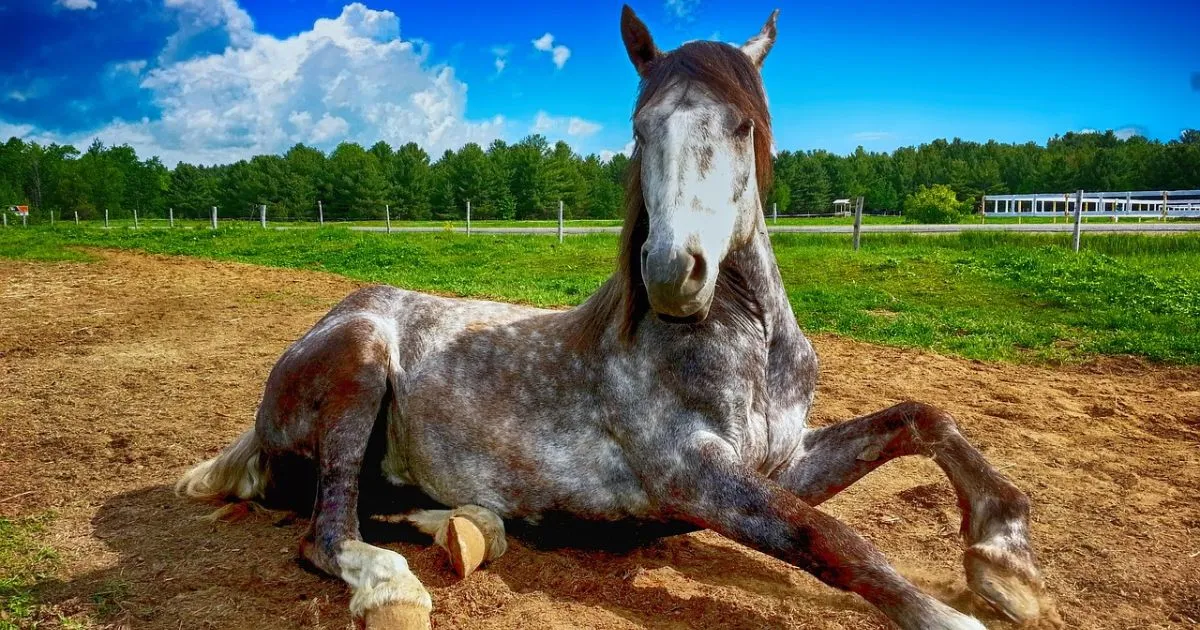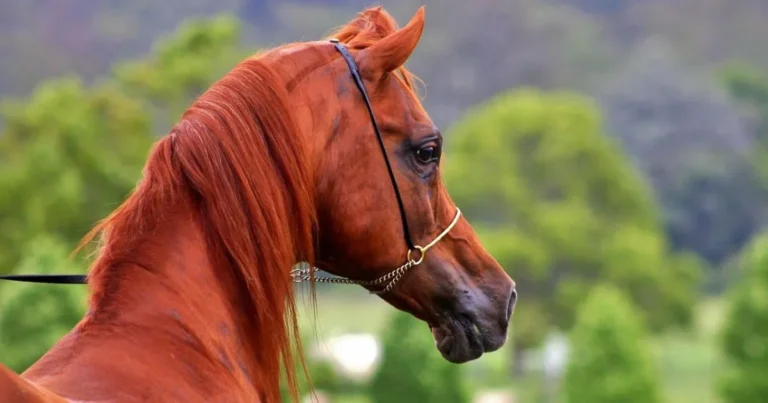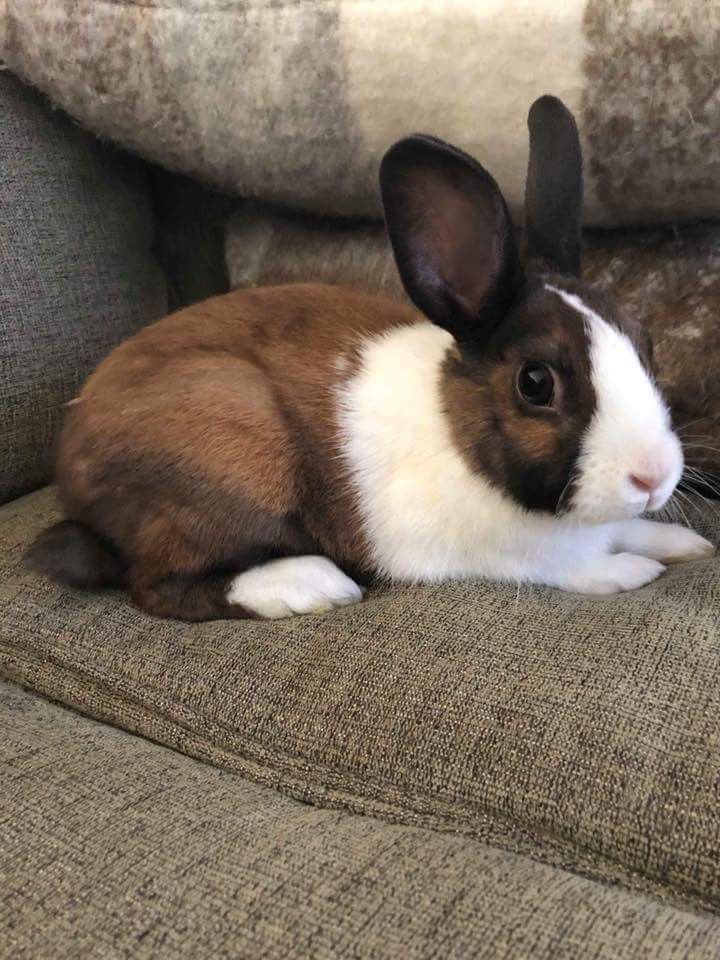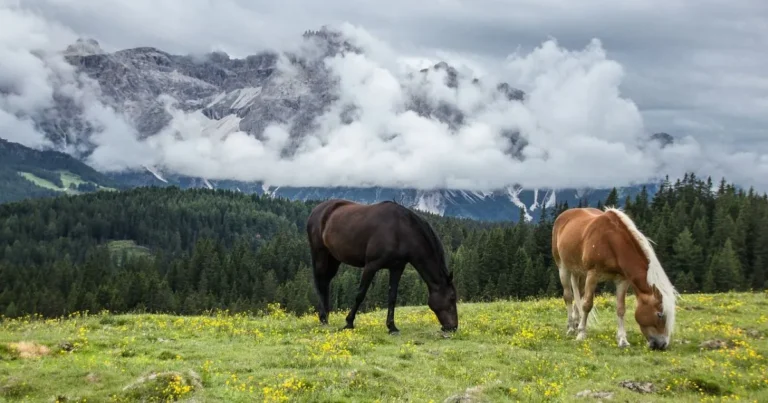Horse Years to Human Years: Age Conversion Guide
Table of Contents
Ever watched a majestic horse gallop across a meadow and wondered about its true age? Understanding horse years to human years isn’t just a numerical curiosity—it’s a gateway to deeper compassion and care for these incredible animals.
Equine age conversion reveals a fascinating world where horse and human life stages diverge dramatically. Your horse’s age isn’t simply a number but a complex reflection of biological development, genetic potential, and environmental factors.
When you explore horse years to human years, you unlock critical insights into your equine companion’s health, nutrition, and emotional needs. This guide will walk you through the intricate science of equine age assessment, helping you understand how horses mature differently from humans.
The journey of equine age conversion goes beyond simple mathematics. It’s about recognizing the unique rhythms of horse development and appreciating the nuanced ways these magnificent creatures grow, thrive, and age.
Whether you’re a seasoned horse owner or a curious enthusiast, understanding horse years to human years will transform how you perceive and care for these remarkable animals.
Understanding Horse Age Comparison Basics
Horses age differently than humans, making a horse aging calculator key. The world of equine development is complex and fascinating. It shows how horses are unique compared to other mammals.
Horses grow fast, unlike humans. A foal can stand and walk in just an hour after birth. Humans take over a year to walk. This shows the special ways horses age compared to humans.
Why Horse and Human Aging Differs
The aging process in horses has unique factors:
- Rapid early development
- Shorter lifespan than humans
- Fast physical growth
- Genetic and evolutionary changes
The Importance of Age Conversion
Knowing a horse’s age is vital for:
- Good vet care
- Right nutrition
- Training and performance goals
- Breeding plans
Key Factors in Equine Age Assessment
Vets and experts look at several things to guess a horse’s age:
- Dental development – How teeth wear and grow
- Physical traits – Muscle, coat condition
- Behavioral changes – Energy, maturity
- Reproductive abilities – Breeding readiness
A horse aging calculator makes these complex stages easier to understand. It helps bridge the gap between horse and human ages.
Horse Years to Human Years: Understanding the Conversion
Turning horse years into human years isn’t just simple math. Veterinarians and experts have created special ways to compare horse and human aging. To convert horse age to human age, you must consider several important factors.
Understanding horse years in human terms means recognizing horses grow fast in their youth. Here’s how it usually works:
- The first year of a horse’s life is about 15 human years
- By age 4, a horse is like a 21-year-old human
- After the first fast growth, aging slows down
Several things affect how horse age is converted, including:
- Breed characteristics
- Individual health conditions
- Living environment
- Nutrition and care
Veterinary research shows horse age conversion isn’t an exact science. While charts offer estimates, each horse ages differently. Always talk to an equine vet for the best age assessment of your horse.
Expert tip: Horses usually live 25-30 years, which is like 75-90 human years in biological aging.
Knowing how to convert horse age to human years helps in caring for these amazing animals. Remember, each horse ages and grows in its own way.
Early Development: From Foal to Young Horse
Learning about horse years to human years means looking into how horses grow early on. Foals grow fast, unlike human babies. The first year is key for their physical and mental changes.
Birth to One Year Milestones
Newborn foals grow quickly, learning survival skills fast. They watch their mothers closely. Important milestones include:
- Standing within 1 hour of birth
- Walking and running within 24 hours
- Nursing regularly
- Exploring surroundings and grazing
Physical Development Stages
Horses grow fast in their first year. They build muscle, bones, and senses quickly. Their weight and height grow a lot, showing how different horse years are from human years.
| Age Stage | Weight Gain | Height Increase |
|---|---|---|
| Birth | 100-150 lbs | 3-4 feet |
| 6 Months | 500-600 lbs | 5-6 feet |
| 12 Months | 800-900 lbs | 6-7 feet |
Critical Growth Periods
The first year is a transformative period for a horse. Nutrition, environment, and genetics play big roles in their growth. Knowing these periods helps vets and horse owners understand how old a horse is.
“A foal’s first year is more developmentally intense than a human child’s first five years combined.” – Equine Development Research Institute
Maturity Rates in Horses Versus Humans
Understanding how horses grow is fascinating. They mature much faster than humans. A horse age comparison table shows how quickly they grow up.
Horses grow physically fast. By 5 years old, they are almost fully grown. This fast growth is key to their survival.
- Horses reach sexual maturity around 2-3 years old
- Human sexual maturity typically occurs between 12-16 years
- Physical peak performance for horses is between 5-15 years
Calculating horse years to human years is complex. A simple conversion doesn’t work. It misses the unique stages of a horse’s life.
| Horse Age | Developmental Stage | Approximate Human Equivalent |
|---|---|---|
| 1 year | Foal/Juvenile | Teenager (13-15 years) |
| 5 years | Mature Adult | Young Adult (20-25 years) |
| 15 years | Mature Stallion/Mare | Middle-Aged Adult (40-45 years) |
| 25 years | Senior Horse | Elderly (60-70 years) |
Genetics, nutrition, and care affect a horse’s aging. Not all horses age the same. This makes it hard to accurately convert their age.
When using a horse years to human years calculator, keep in mind it’s an estimate. A horse’s health, breed, and lifestyle also influence its true age.
The Science Behind Horse Age Calculation
Figuring out how to turn horse years into human years is complex. Veterinarians and experts use special methods to guess a horse’s age. They look at how the horse has grown and developed.
Traditional Calculation Methods
Old ways to guess a horse’s age included:
- Tooth wear patterns
- Coat color changes
- Physical characteristics
Looking at a horse’s teeth is still a top way to guess its age. The teeth tell a lot about how old the horse really is.
Modern Age Assessment Techniques
New tech has changed how we figure out horse years. Now, vets use:
- Genetic marker analysis
- Comprehensive blood tests
- Digital dental examinations
| Assessment Method | Accuracy Level | Key Indicators |
|---|---|---|
| Dental Examination | 85-90% | Tooth wear, eruption patterns |
| Genetic Analysis | 95-98% | Chromosomal age markers |
| Blood Testing | 75-80% | Hormonal and cellular indicators |
Veterinary Perspectives on Age Conversion
Vets say equine age conversion is not a perfect science. A horse’s health, breed, and where it lives all affect its age.
“No two horses age identically. Our assessments must consider multiple factors beyond simple numerical calculations.” – Dr. Sarah Reynolds, Equine Veterinary Specialist
Breed-Specific Age Considerations
Using a horse aging calculator shows that not all horses age the same. Different breeds have their own aging patterns. This makes it harder to convert horse years to human years than a simple formula.
Smaller breeds like ponies age differently than larger ones. Their metabolism, genetics, and life experiences affect their aging. This means they grow and mature at different rates.
- Smaller breeds often mature faster in early years
- Larger breeds tend to have shorter overall lifespans
- Genetic predispositions play a crucial role in aging
It’s important to know about breed-specific aging when converting horse years to human years. Some breeds live longer, while others have shorter lives.
| Horse Breed | Average Lifespan | Maturity Rate |
|---|---|---|
| Arabian | 25-30 years | Moderate |
| Shetland Pony | 30-35 years | Rapid |
| Thoroughbred | 20-25 years | Slower |
Your horse’s breed is key to understanding its aging. A horse aging calculator gives basic insights. But, talking to a vet who knows about breed-specific aging is best for a precise assessment.
Life Stages of Horses: A Comparative Analysis
Knowing the life stages of horses is key to giving them the best care. Horses age differently than humans, making it interesting to compare. Each stage has its own needs and characteristics.
Horses go through life stages similar to humans in some ways. But, their aging process is unique. This requires special knowledge to care for them properly.
Adolescence (0-3 Years)
In their early years, horses grow fast. These stages are crucial for their physical and mental growth. It’s like their childhood and early teens.
- Rapid physical growth occurs during this period
- Bone and muscle development are paramount
- Training and socialization begin
Adulthood (4-15 Years)
Adult horses are at their best during this time. Their age is similar to humans in their 20s to 40s. They are strong and capable.
| Horse Age | Approximate Human Age Equivalent | Characteristics |
|---|---|---|
| 4-7 years | 20-35 years | Peak physical condition |
| 8-12 years | 35-45 years | Stable performance |
| 13-15 years | 45-55 years | Gradual performance decline |
Senior Years (15+ Years)
As horses get older, they need special care. Their aging process is more complex, with health playing a big role. This affects how long and well they live.
- Increased veterinary attention needed
- Specialized nutrition becomes crucial
- Reduced physical activity
Note: Individual horse breeds and genetics can significantly impact these general life stage guidelines.
Factors Affecting Horse Longevity
To understand how to convert horse age to human years, we must look at what affects a horse’s lifespan. Many factors play a role in how long a horse lives and how fast they age compared to humans.
Genetics are a big deal in horse years to human years calculations. Some horse breeds live longer or shorter lives based on their genes. For instance:
- Arabian horses often live longer, typically reaching 25-30 years
- Draft horses tend to have shorter lifespans due to their larger body size
- Pony breeds frequently demonstrate remarkable longevity
Your horse’s environment and care greatly affect their aging. Proper nutrition, regular veterinary check-ups, and appropriate exercise can help extend a horse’s life.
Important factors that affect horse longevity include:
- Breed-specific genetic predispositions
- Quality of daily care and management
- Nutritional intake and diet quality
- Regular medical screenings
- Living conditions and stress levels
Veterinarians use these complex variables when trying to convert horse age to human years. No single formula works for every horse. So, each horse needs a personal assessment to understand their true biological age.
“Each horse ages uniquely, just as humans do. Their life journey is a complex interplay of genetics, care, and environment.” – Equine Veterinary Association
Using Age Conversion Charts and Calculators
It can be tricky to figure out how old a horse is in human years. The right tools, like a horse age comparison table or calculator, can help. They give insights into your horse’s life stage and health needs.
Using age conversion tools well means knowing the important details. Different breeds and horses age at different rates. This makes it key to get the calculations right for their care.
Interpreting Age Conversion Charts
When looking at a horse age comparison table, remember these points:
- Look for breed-specific information
- Consider gender differences in aging
- Understand that larger horses typically age faster
- Recognize variations in individual horse development
Digital Calculation Tools
Today, there are many digital tools for quick horse age calculations:
- Online horse age calculators
- Veterinary mobile apps
- Specialized equine age conversion websites
| Horse Age | Approximate Human Age Equivalent | Life Stage |
|---|---|---|
| 1 year | 15 years | Adolescent |
| 5 years | 25-30 years | Young Adult |
| 15 years | 45-50 years | Middle-Aged |
| 25 years | 70-75 years | Senior |
Pro tip: Always consult with a veterinarian for the most accurate age assessment of your specific horse.
Health and Care Considerations by Age
Knowing how to convert horse years to human years is key for the best care at every stage of a horse’s life. Each age brings its own health issues that need special care and planning.
As horses get older, their health needs change a lot. Young horses need different food than older ones. Knowing how to convert equine ages helps owners meet their health needs at each stage.
- Younger horses (like human teenagers) need:
- Regular vaccinations
- Balanced nutrition for growth
- Consistent exercise regimens
- Senior horses (15+ years) typically require:
- More frequent veterinary check-ups
- Specialized senior horse diets
- Reduced intense physical activities
Vets suggest customizing care plans based on your horse’s age and breed. Proactive monitoring helps catch health problems early. This keeps your horse healthy for years to come.
Regular health checks are crucial as horses age. Knowing how to convert equine ages helps you prepare for health issues that come with age.
Conclusion
Figuring out how to convert horse years to human years can be tricky for horse owners. Each horse ages differently, unlike humans. Knowing these differences helps you care for your horse better and appreciate their life stages.
Converting horse years to human years isn’t just a simple math problem. Things like breed, genetics, and health affect how a horse ages. Remember, every horse is unique, with its own needs and traits that go beyond simple charts.
Vets say to see age conversion as a guide, not a hard rule. Your horse’s health, activity level, and overall well-being are key to its true age. Understanding these details helps you make better choices for your horse’s care and lifestyle.
Learning about converting horse years gives you insights into their health and growth. View this knowledge with curiosity and care, knowing each horse’s aging journey is special. Your dedication to understanding and meeting your horse’s needs will greatly improve your bond.






